Table of Contents
Picture this: it’s 1884 in Turin, Italy, and Angelo Moriondo is tinkering with steam and pressure in his workshop, completely unaware that he’s about to change how the world drinks coffee forever. That first espresso machine patent would spark a revolution that’s still brewing in kitchens and cafés across the globe today.
If you’ve ever wondered how that perfect shot of espresso came to be—the one with the golden crema that makes your morning complete—you’re in for a treat. The history of espresso isn’t just about machines and patents; it’s a story of innovation, passion, and the relentless pursuit of the perfect cup.
As someone who’s spent countless hours perfecting espresso shots at home, I’ve always been fascinated by how this beloved brewing method evolved from a simple idea to the sophisticated craft we know today. Let me take you on a journey through time to explore how espresso became the foundation of coffee culture worldwide.
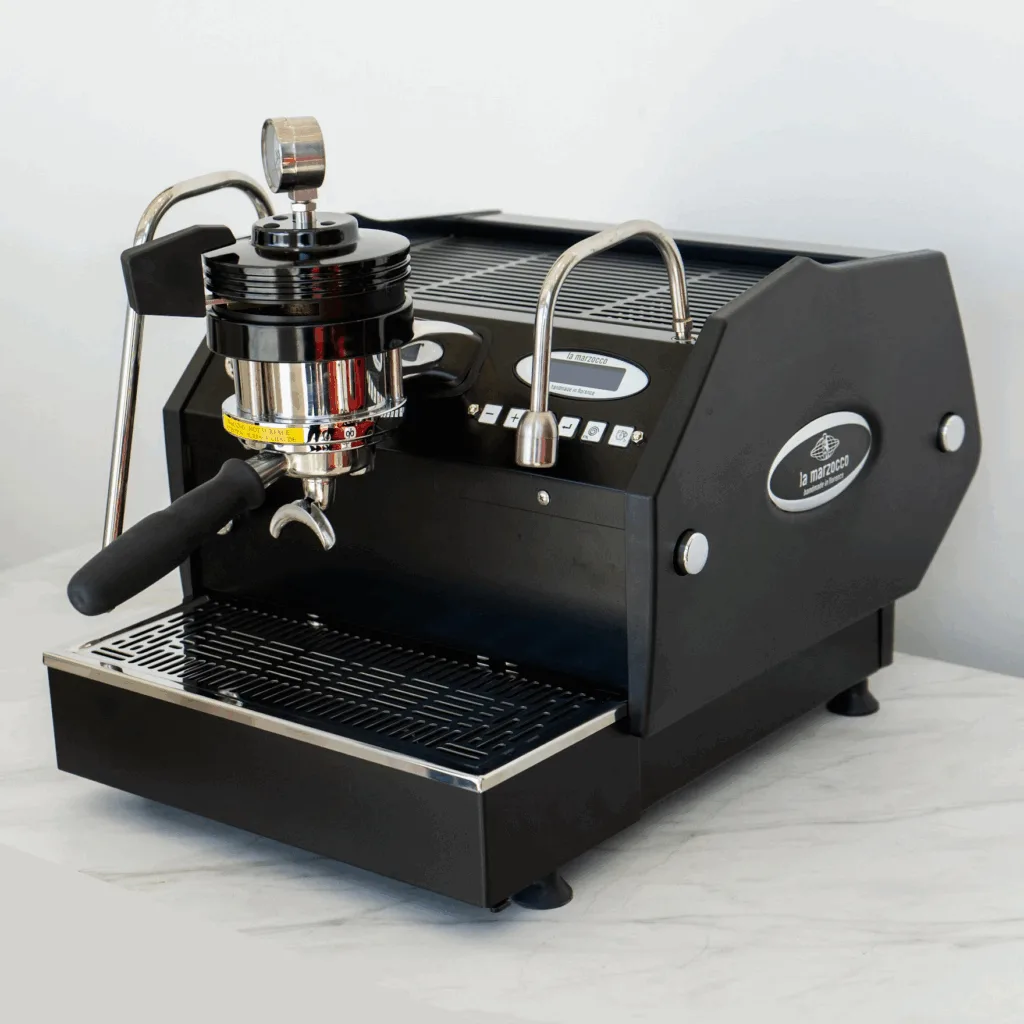
Key Takeaways:
- Angelo Moriondo invented the first espresso machine in 1884, revolutionizing coffee brewing with steam and pressure
- Luigi Bezzera’s 1901 improvements created the single-serving espresso concept that defines modern espresso culture
- Achille Gaggia’s 1947 lever machine introduced high-pressure extraction, creating the signature crema we love today
- Espresso evolved from a time-saving solution to an art form, spreading from Italy to become a global coffee phenomenon
- Modern espresso machines combine traditional Italian craftsmanship with cutting-edge technology, making café-quality espresso accessible to home brewers
The Birth of Espresso: Italy’s Coffee Revolution
The history of espresso begins in 19th-century Italy, where coffee culture was already deeply rooted in daily life. But there was a problem—brewing coffee took too long, especially for busy café owners trying to serve impatient customers.
Enter Angelo Moriondo, a Turin-based inventor who received the first patent for an espresso machine on May 16, 1884. His “new steam machinery for the economic and instantaneous confection of coffee beverage” used steam and water pressure to brew coffee faster than ever before.
For a deeper look into how early coffee inventions shaped modern brewing, check out this Smithsonian Magazine feature on the evolution of espresso innovation.
Moriondo’s Revolutionary Concept
Moriondo’s machine was quite different from what we’d recognize as espresso today. It was:
- Large and stationary (designed for cafés, not individual cups)
- Steam-powered (using boiler pressure to force water through coffee)
- Batch-oriented (brewing multiple servings at once)
While Moriondo’s invention laid the groundwork, it didn’t create the individual espresso shots we know and love. That breakthrough would come later.
Luigi Bezzera: The Father of Modern Espresso
Twenty years after Moriondo’s patent, Luigi Bezzera took the history of espresso in a new direction. In 1901, this Milanese inventor filed a patent for improvements that would define espresso as we know it.
Bezzera’s innovations included:
- Individual serving capability ☕
- Portafilter design (the handled basket that holds ground coffee)
- Multiple group heads (allowing baristas to make several drinks simultaneously)
- Improved pressure system for better extraction
“Bezzera didn’t just improve the espresso machine—he created the espresso experience.”
The Bezzera Machine Features
| Innovation | Impact |
|---|---|
| Portafilter | Standardized coffee dosing and tamping |
| Group heads | Increased café efficiency |
| Pressure gauge | Better brewing control |
| Individual shots | Personalized coffee experience |
Bezzera’s financial constraints led him to sell his patent to Desiderio Pavoni in 1903, who would commercialize and popularize the design throughout Italy.
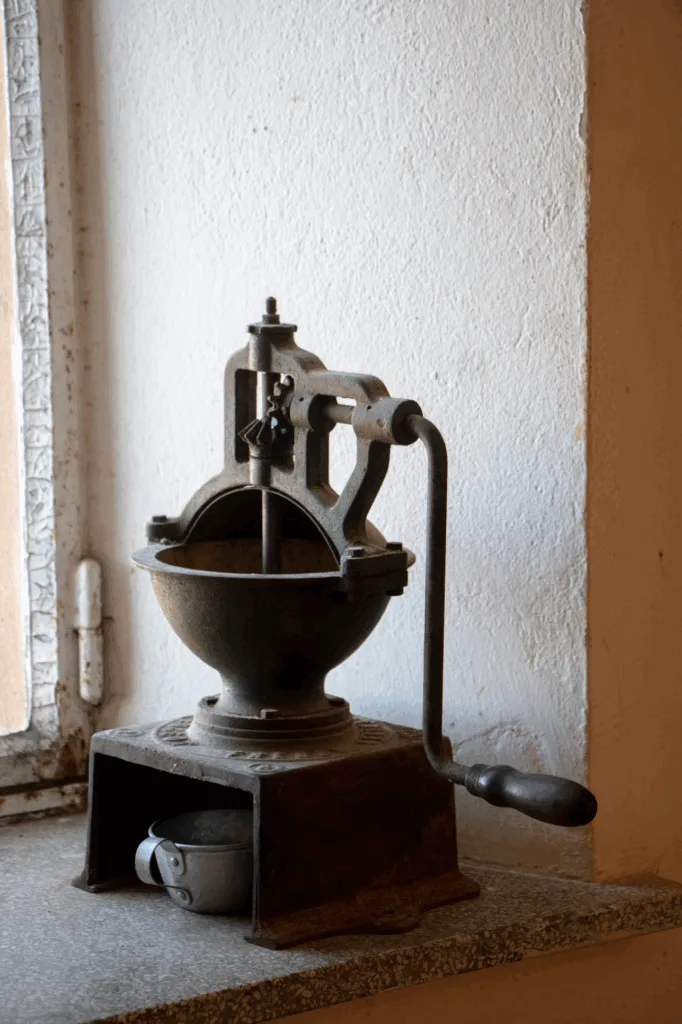
The Pavoni Era: Commercializing Espresso
Desiderio Pavoni transformed Bezzera’s invention into a commercial success. The Pavoni company, founded in 1905, began mass-producing espresso machines and spreading espresso culture throughout Italy.
Pavoni’s contributions to espresso history include:
- Pressure release valve for safety
- Steam wand for milk frothing (hello, cappuccinos!)
- Improved boiler design for consistent temperature
- Training programs for baristas
The Pavoni machines established many conventions we still see today. If you’ve ever watched a barista work their magic, you’re seeing techniques that trace back to Pavoni’s era.
The Gaggia Revolution: Enter the Crema
The next major chapter in the history of espresso came in 1947 when Achille Gaggia introduced the lever espresso machine. This wasn’t just an incremental improvement—it was a game-changer.
Why Gaggia’s Innovation Mattered
Gaggia’s lever machine created higher pressure (8-10 bars instead of 1.5-2 bars) by using a spring-loaded lever system. This higher pressure extraction produced something magical: crema.
That golden, velvety foam on top of your espresso? That’s Gaggia’s legacy. Initially, customers were suspicious of this strange foam, but it quickly became the hallmark of quality espresso.
The Gaggia Difference:
- ✅ Higher pressure extraction (8-10 bars)
- ✅ Consistent crema production
- ✅ Better flavor extraction
- ✅ Temperature stability
- ✅ Manual control for skilled baristas
I find it fascinating that something we now consider essential to espresso—the crema—was once viewed with suspicion. It just shows how coffee culture evolves over time.
Post-War Espresso: The Italian Economic Miracle
The 1950s and 1960s marked a golden age in espresso history. As Italy rebuilt after World War II, espresso culture exploded alongside the country’s economic boom.
Key Developments During This Era:
Faema E61 (1961): Introduced the heat exchanger system, allowing simultaneous brewing and steaming. This machine design is still the foundation for many modern espresso machines you’ll find when comparing different models.
La Marzocco: Founded in 1927 but gained prominence in the 1960s with innovative dual-boiler systems.
Automatic dosing: Machines began featuring automatic water dosing, making espresso more consistent and accessible.
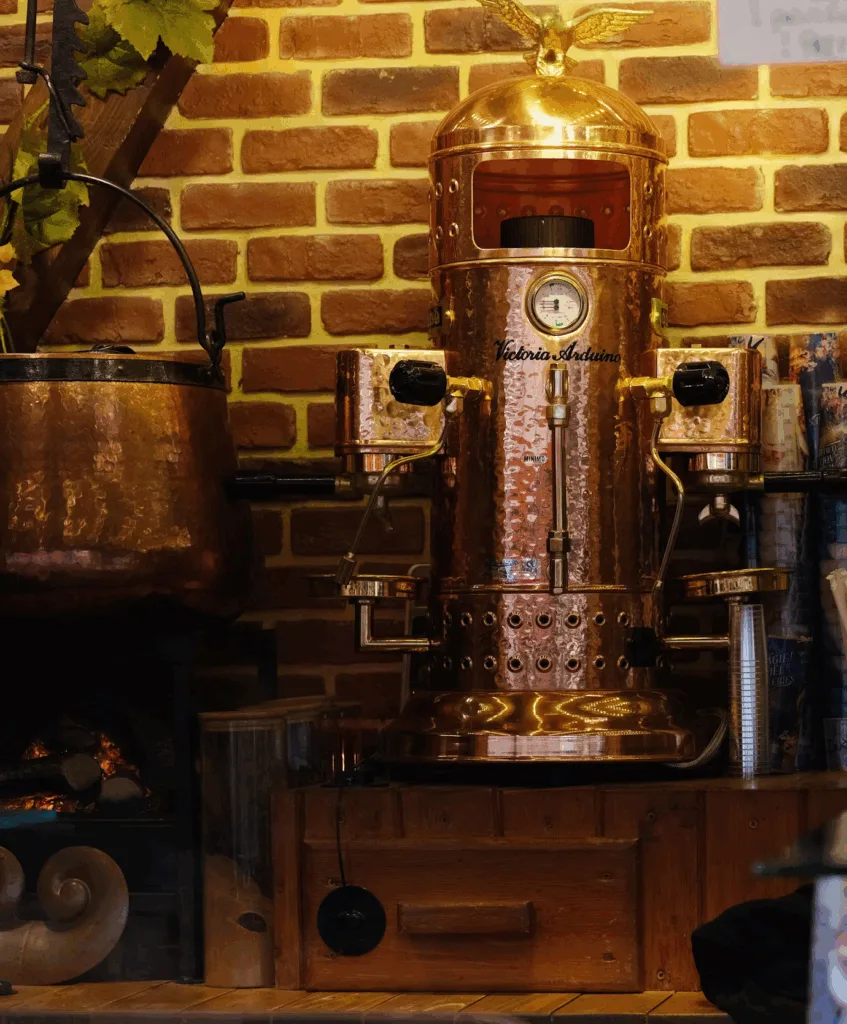
alt=”traditional Italian café interior with vintage espresso equipment”
Espresso Goes Global: The Third Wave Coffee Movement
While espresso remained primarily Italian through the mid-20th century, the 1980s and beyond saw its global expansion. This coincided with what coffee experts call the “Third Wave” coffee movement—treating coffee as artisanal craft rather than commodity.
How Espresso Conquered the World
1980s-1990s: Specialty coffee shops began appearing in major cities worldwide
2000s: Home espresso machines became more affordable and accessible
2010s: The rise of coffee culture on social media accelerated global adoption
2020s: The pandemic drove home brewing to new heights
The history of espresso shows us that great innovations often start simple and evolve through passionate communities. Today’s home baristas have access to technology that would amaze those early Italian inventors.
To explore how espresso influenced coffee culture around the world, see National Geographic’s insights on global coffee traditions.
Modern Espresso Technology: Where We Are Today
Fast-forward to 2025, and the espresso landscape has transformed dramatically. Modern machines combine traditional Italian craftsmanship with cutting-edge technology.
Today’s Espresso Innovations Include:
- PID temperature controllers for precise brewing
- Pressure profiling to customize extraction
- Smart connectivity for remote monitoring
- Sustainable materials and energy efficiency
- Compact designs perfect for home kitchens
The variety of espresso equipment available today would boggle the minds of those early pioneers. Yet the fundamental principles they established—pressure, temperature, timing—remain unchanged.
Popular Modern Machine Categories:
| Type | Best For | Price Range |
|---|---|---|
| Manual/Lever | Purists & control enthusiasts | $200-$3000+ |
| Semi-automatic | Home baristas wanting control | $300-$2000 |
| Automatic | Convenience seekers | $400-$1500 |
| Super-automatic | Ultimate convenience | $800-$5000+ |
The Science Behind Perfect Espresso
Understanding the history of espresso helps us appreciate why certain brewing parameters matter so much. Those early inventors discovered through trial and error what we now understand scientifically.
The Golden Ratio
Modern espresso follows principles established over a century ago:
- Pressure: 9 bars (Gaggia’s insight)
- Temperature: 190-196°F (Pavoni’s contribution)
- Time: 25-30 seconds (refined through generations)
- Grind: Fine, consistent (enabled by better grinder technology)
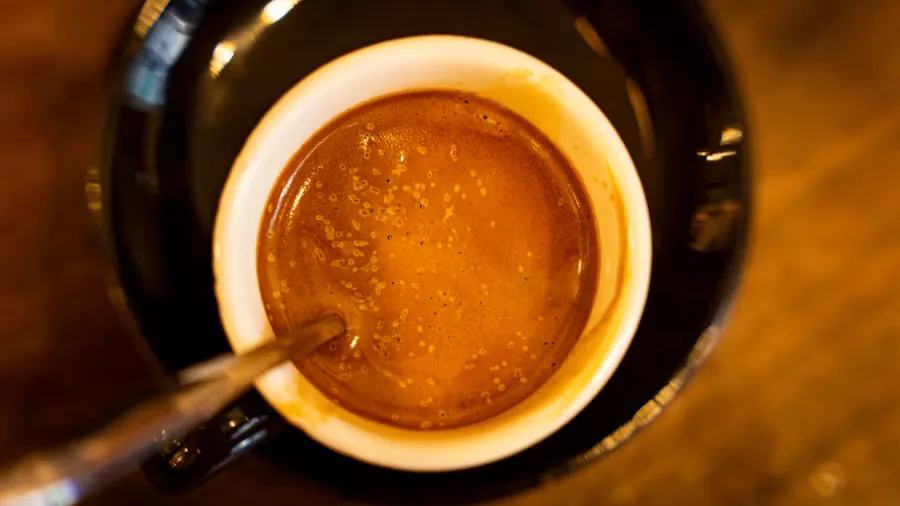
Cultural Impact: More Than Just Coffee
The history of espresso isn’t just about machines—it’s about culture. Espresso created:
The Italian Coffee Bar Culture: Quick, standing consumption with social interaction
Barista Craft: Skilled professionals who elevate coffee preparation to art
Global Coffee Language: Terms like “cappuccino,” “macchiato,” and “americano”
Home Coffee Revolution: Bringing café-quality drinks to kitchen counters
When I think about how espresso has shaped our daily routines, it’s remarkable. That morning ritual, that afternoon pick-me-up, that social lubricant for business meetings—espresso touches millions of lives daily.
Regional Variations and Adaptations
As espresso spread globally, different cultures adapted it to local tastes:
Notable Regional Adaptations:
Australia: Flat white culture and specialty coffee focus
United States: Larger serving sizes and flavored variations
Japan: Precision brewing and siphon coffee integration
Scandinavia: Light roast emphasis and filter coffee hybrid approaches
Each region’s interpretation adds to the rich tapestry of espresso history, showing how a fundamentally Italian invention became a global language.
The Home Barista Revolution
Perhaps the most exciting chapter in recent history of espresso is the rise of home brewing. What once required expensive commercial equipment is now accessible to anyone passionate about great coffee.
Factors Driving Home Espresso Growth:
- Affordable quality machines from brands like Breville and De’Longhi
- Educational resources (like what we provide at Espresso Insider)
- Specialty coffee availability through online retailers
- Community knowledge sharing via forums and social media
- Pandemic-driven home brewing interest
The democratization of espresso knowledge means today’s home baristas can achieve results that would impress those Italian pioneers. We’ve come full circle—from café innovation back to personal, artisanal preparation.
Sustainability and the Future of Espresso
As we look toward the future, the history of espresso continues evolving with environmental consciousness:
Sustainable Practices Include:
- Energy-efficient machine designs
- Recyclable coffee pod systems
- Direct-trade coffee sourcing
- Reduced packaging waste
- Longer-lasting equipment construction
The next chapter of espresso history will likely focus on balancing our love for great coffee with environmental responsibility.
Learning from Espresso History: Lessons for Today’s Brewers
What can we learn from the history of espresso to improve our home brewing?
Key Historical Insights:
- Consistency matters: Every innovation focused on reproducible results
- Pressure is crucial: From Moriondo to Gaggia, pressure improvements drove quality
- Temperature control: Stable brewing temperature has always been essential
- Fresh ingredients: Historical emphasis on quality coffee remains vital
- Practice makes perfect: Barista skills developed through repetition and refinement
These principles, established over 140 years ago, still guide excellent espresso preparation today.
Common Misconceptions About Espresso History
Let me clear up some myths about espresso’s origins:
Myth: Espresso was invented to make coffee faster
Reality: While speed was a factor, the primary goal was consistent quality
Myth: Crema was always part of espresso
Reality: Crema only appeared with Gaggia’s high-pressure machines in 1947
Myth: Espresso roasts should be very dark
Reality: Historical Italian roasts were often lighter than modern “espresso roasts”
Understanding these misconceptions helps us appreciate how espresso culture has evolved and sometimes mythologized its own history.
The Economics of Espresso Evolution
The history of espresso is also an economic story. Each innovation responded to market needs:
- Moriondo: Café efficiency and customer throughput
- Bezzera: Individual service and quality control
- Pavoni: Mass production and standardization
- Gaggia: Premium experience and differentiation
- Modern era: Home market accessibility and convenience
This economic driver continues today, with manufacturers constantly balancing performance, convenience, and affordability for home users.
Espresso’s Influence on Coffee Culture Worldwide
The ripple effects of espresso innovation extend far beyond Italy:
Global Coffee Culture Changes:
Café Design: Espresso machines became focal points of coffee shop design
Service Speed: Quick service expectations spread to other beverage categories
Quality Standards: Espresso set benchmarks for coffee preparation excellence
Professional Development: Barista competitions and certifications emerged
Consumer Education: Coffee appreciation became more sophisticated globally
When you visit any modern coffee shop, you’re experiencing the culmination of espresso’s cultural influence.
Preserving Espresso Traditions in Modern Times
As technology advances, many coffee enthusiasts work to preserve traditional espresso methods:
Traditional Preservation Efforts:
- Manual lever machine restoration
- Historical brewing technique documentation
- Artisanal roasting method preservation
- Cultural exchange programs with Italian masters
- Heritage coffee variety cultivation
Balancing innovation with tradition remains a central theme in espresso’s ongoing story.
The Role of Competition in Espresso Development
Competitive pressure has always driven espresso innovation:
Historical Competition Examples:
1900s-1920s: Italian manufacturers competing for café contracts
1950s-1970s: International expansion and brand building
1990s-2000s: Home market development and feature competition
2010s-Present: Smart technology integration and sustainability focus
This competitive environment continues pushing espresso equipment toward better performance and accessibility. For home brewers, this means more options and better value than ever before.
Future Trends in Espresso History
Looking ahead, several trends are shaping the next chapter of espresso history:
Emerging Trends:
Artificial Intelligence: Smart machines learning user preferences
Sustainability Focus: Carbon-neutral brewing and equipment
Precision Control: Molecular-level extraction optimization
Accessibility: Making quality espresso available to more people
Health Integration: Functional coffee beverages and wellness focus
The story of espresso continues evolving, driven by the same passion for excellence that motivated those early Italian inventors.
Conclusion
The history of espresso is far more than a timeline of mechanical innovations—it’s a story of human ingenuity, cultural evolution, and the relentless pursuit of the perfect cup. From Angelo Moriondo’s steam-powered experiment in 1884 to today’s smart, connected machines, each breakthrough has brought us closer to that ideal: café-quality espresso, accessible to anyone passionate enough to learn.
What strikes me most about this journey is how the fundamental principles haven’t changed. Pressure, temperature, timing, and quality ingredients—the same factors that mattered to Luigi Bezzera in 1901 still determine whether your morning espresso sings or falls flat.
As a home barista in 2025, you’re part of this continuing story. Every shot you pull, every adjustment you make, every moment you spend perfecting your craft connects you to generations of coffee lovers who shared the same passion.
Ready to write your own chapter in espresso history? Start by exploring our comprehensive equipment guides to find the perfect machine for your journey. Remember, the best espresso isn’t just about the equipment—it’s about understanding the craft, respecting the tradition, and never stopping your pursuit of that perfect shot.
Whether you’re just beginning your espresso journey or you’re a seasoned home barista, the history we’ve explored shows us that great coffee comes from curiosity, practice, and passion. So fire up that machine, dial in your grind, and become part of espresso’s ongoing story. After all, the next breakthrough in espresso excellence might just come from your kitchen.
FAQs – Modern Espresso
Who invented modern espresso?
Modern espresso traces its roots to Angelo Moriondo’s 1884 steam-powered machine, later refined by Luigi Bezzera and Achille Gaggia, whose innovations introduced single-shot brewing and the iconic crema.
What makes espresso “modern”?
Modern espresso blends traditional Italian design with advanced technology like PID temperature control, pressure profiling, and smart automation—bringing café-quality coffee to home kitchens.
How did espresso become a global coffee icon?
Espresso spread worldwide through post-war Italian cafés, the rise of specialty coffee movements, and today’s home barista revolution, making it a cornerstone of global coffee culture.
What’s the biggest innovation in espresso since its invention?
Gaggia’s introduction of high-pressure extraction in 1947 changed everything—creating crema and defining the espresso flavor profile we know today. More recently, smart machines and sustainability advances continue the evolution.
How does modern espresso differ from traditional espresso?
Traditional espresso relied on manual levers and boiler pressure, while modern espresso uses precise electronic controls and consistent pressure systems, offering greater flavor accuracy and ease for home brewers.







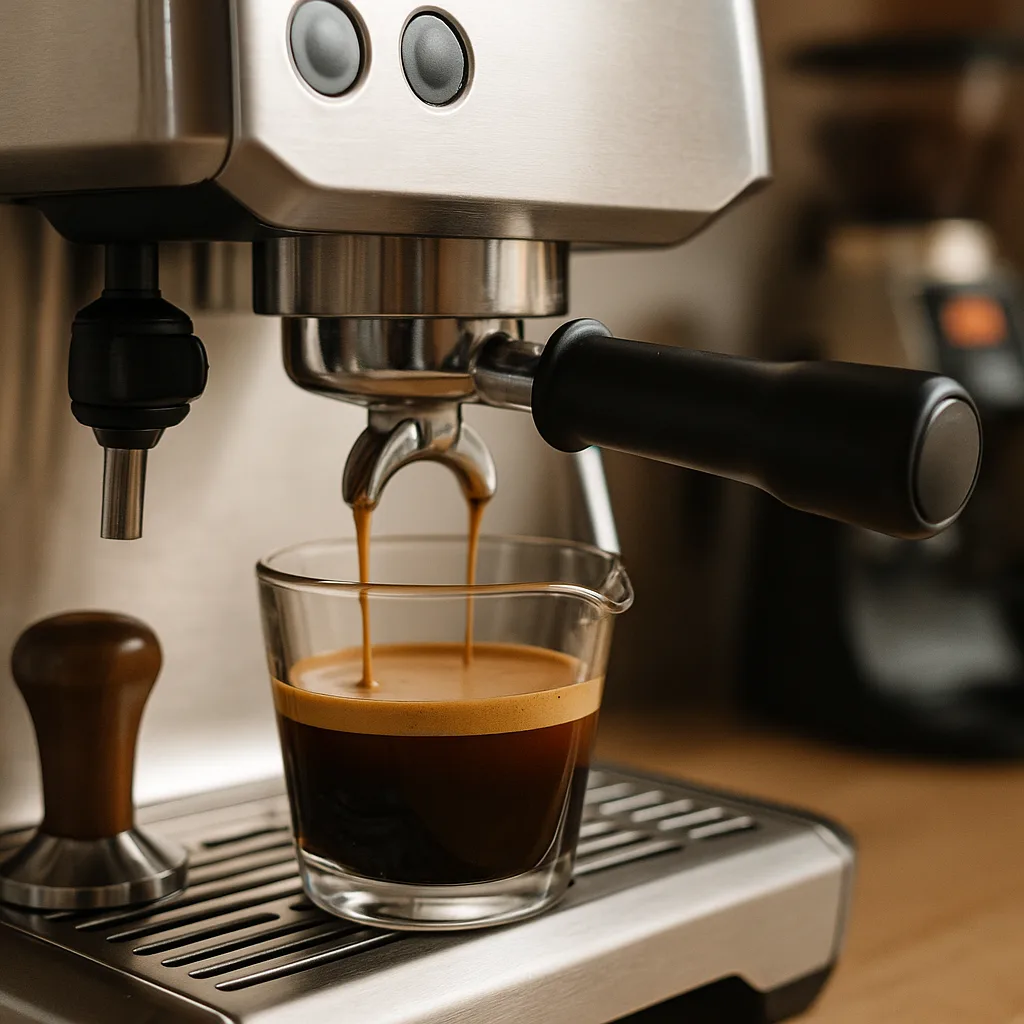
Leave a Reply
You must be logged in to post a comment.